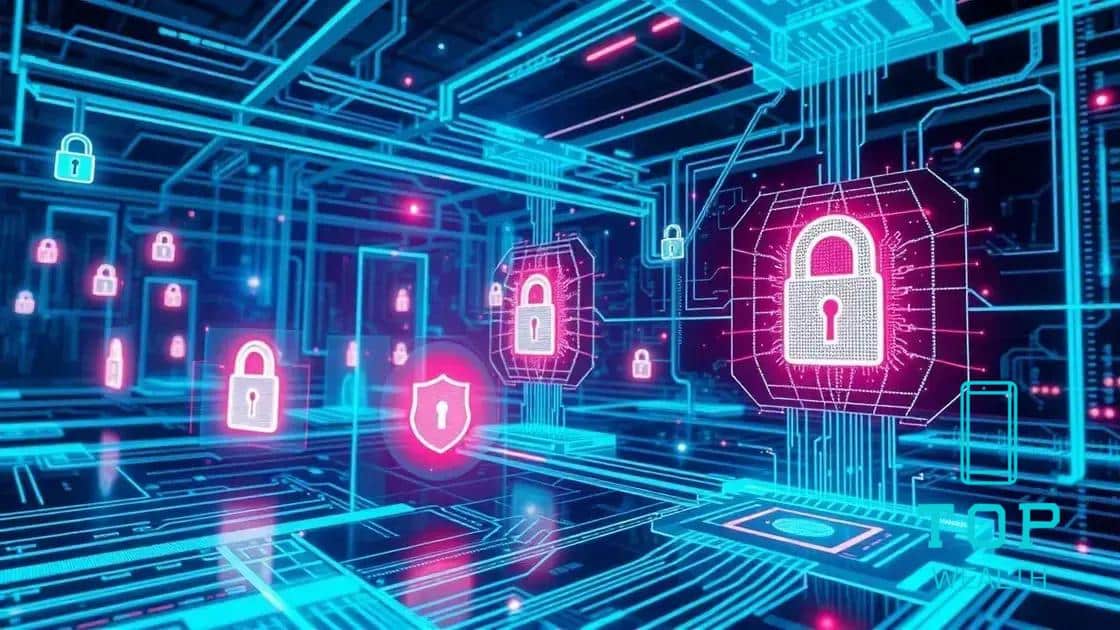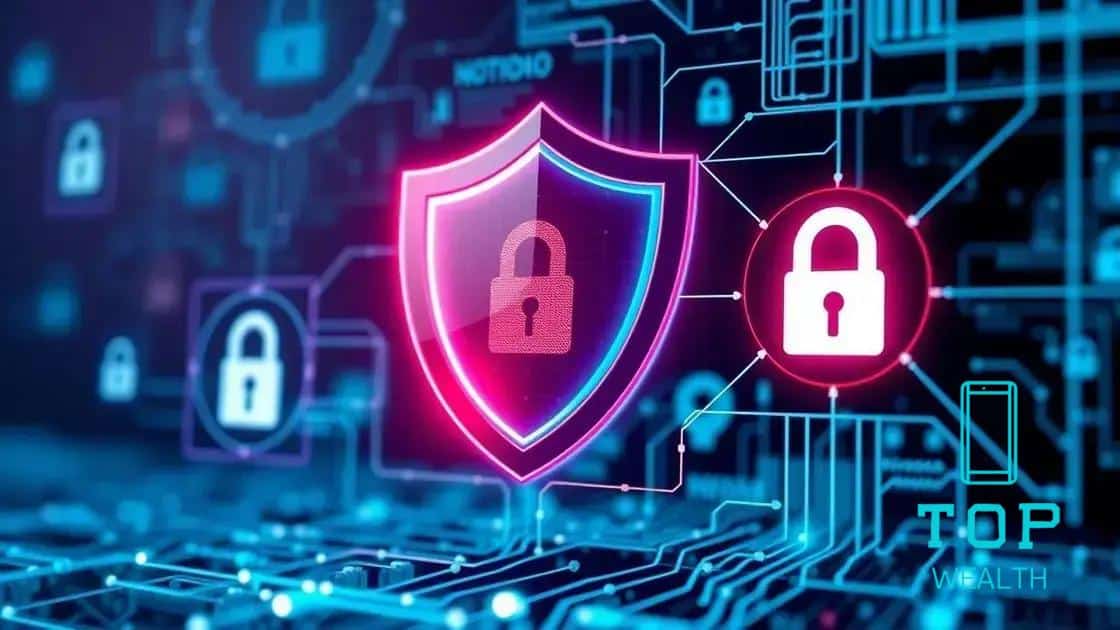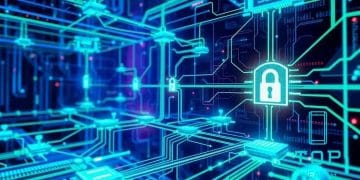Strategies to secure systems from disinformation in 2025

Strategies to secure systems from disinformation in 2025 include implementing robust security protocols, leveraging technology for detection, fostering a culture of awareness, and regularly evaluating effectiveness to maintain integrity and reliability.
Strategies to secure systems from disinformation in 2025 are becoming increasingly vital as technology evolves. Have you ever wondered how misinformation impacts your daily decisions? This article dives into key measures you can adopt to protect yourself and your organization.
Understanding disinformation: What you need to know
Understanding disinformation is crucial in an age where information travels fast. It can shape opinions and impact decisions widely. Disinformation refers to false or misleading information intentionally created to deceive. Recognizing its presence is the first step in safeguarding against it.
Types of Disinformation
There are various forms of disinformation that you should be aware of.
- Fake news: Stories that are fabricated or misrepresented.
- Deepfakes: Manipulated videos that can portray individuals saying or doing things they never did.
- Propaganda: Information biased toward a particular political agenda.
Learning to identify these types will help you remain vigilant. Additionally, understanding the motivations behind disinformation is key. Often, the goal is to confuse or mislead the audience for political gain, financial profit, or social disruption. This highlights the importance of verifying the sources of information you come across.
How to Spot Disinformation
A critical approach can significantly reduce the impact of disinformation. Evaluate information by asking these questions:
- Who created this information?
- What is the purpose of sharing this?
- Is there supporting evidence available?
By asking these questions, you cultivate a habit of skepticism that can guide your understanding of the media you consume.
It’s essential to stay informed about digital literacy and how technology can aid in combating disinformation. Sharing reliable sources and educating others in your network can create a ripple effect in information integrity. As we move towards 2025, being proactive in addressing disinformation becomes imperative for a healthy information ecosystem.
Top strategies for securing your systems

Securing your systems against disinformation requires a proactive approach. Implementing strong strategies is essential to protect valuable information. Begin by assessing the current state of your security measures and identifying areas that need improvement. Awareness of potential threats is the first step in fortifying your defenses.
Implement Robust Security Protocols
One of the most effective strategies is to establish stringent security protocols. These protocols should include:
- Regular updates: Ensure that all software and systems are updated frequently to protect against vulnerabilities.
- Access control: Limit access to sensitive information to authorized personnel only.
- Data encryption: Utilize encryption techniques for protecting data in transit and at rest.
By applying these measures, you can create a stronger barrier against disinformation.
Utilize Advanced Monitoring Tools
Monitoring tools can play a significant role in detecting disinformation attempts early. Using the right technology allows for:
- Real-time alerts: Get notified immediately about suspicious activities.
- Behavior analysis: Assess user activities to identify abnormal patterns that might indicate a breach.
- Network security: Safeguard your network from external threats by maintaining robust firewall protections.
These tools not only help in identifying risks but also in mitigating them before they escalate into serious issues.
Education and training are equally crucial. Ensuring that your team is informed about disinformation tactics empowers them to recognize and respond effectively. Regular training sessions can boost awareness and preparedness, fostering a culture of security within your organization.
Finally, collaboration with external experts can enhance your security framework. Engaging with cybersecurity professionals can provide insights and strategies that may not be apparent from within. Their expertise can guide you in implementing effective measures tailored to your specific needs and challenges.
How technology can combat disinformation
Technology plays a crucial role in combating disinformation. By leveraging modern tools, individuals and organizations can better protect themselves against the spread of false information. One significant way technology aids in this fight is through the use of advanced analytics. These tools can track the origin and spread of information across various platforms, allowing for quick identification of potential disinformation.
Artificial Intelligence in Detection
Artificial intelligence (AI) has transformed how we handle information online. AI algorithms can analyze vast amounts of data to:
- Identify patterns: Recognize trends that indicate disinformation.
- Flag suspicious content: Automatically alert users about potentially false information.
- Improve fact-checking: Enhance the accuracy of verifying information with credible sources.
This capability makes it easier to dismantle disinformation campaigns before they gain traction.
Social Media Monitoring Tools
Monitoring tools are essential for staying informed about emerging disinformation. These tools allow users to:
- Track sources: Identify where false information originates.
- Analyze engagement: See how information spreads across networks.
- Collaborate with others: Share findings to enhance collective awareness.
By using such tools, individuals can take action against misleading information proactively.
Moreover, educational technologies are vital in combating disinformation. By promoting digital literacy, technology empowers users to critically evaluate the content they consume. Courses and resources focused on identifying credible sources can significantly reduce susceptibility to false information.
Lastly, blockchain technology offers a transparent way to verify information. By creating unalterable records of data, it helps ensure authenticity. This can be especially valuable in journalism and academic research, where accurate data is paramount.
Building a culture of information integrity

Building a culture of information integrity is essential for combating disinformation effectively. This culture promotes trust, accountability, and critical thinking within an organization or community. Everyone plays a role in ensuring that accurate information is shared and valued.
Encouraging Open Dialogue
To foster this culture, start by encouraging an open dialogue among team members. Allowing discussions about misinformation can help everyone understand its impact.
- Share experiences: Encourage employees to share stories about times they encountered disinformation.
- Seek feedback: Create an environment where questions and critiques are welcome.
- Provide training: Offer training sessions focused on identifying and managing disinformation.
These steps can create a safe space for addressing concerns and learning collectively.
Establishing Clear Guidelines
Another important aspect of building a culture of integrity is establishing clear guidelines for information sharing. These guidelines should cover what constitutes trustworthy information and how to verify sources.
- Set standards: Define what credible sources look like.
- Encourage fact-checking: Promote the practice of verifying information before sharing.
- Lead by example: Leadership should model integrity in information sharing.
By setting expectations, organizations can create a framework that encourages responsible behavior regarding information.
Additionally, regular workshops focusing on media literacy can be effective. Teaching everyone how to navigate the information landscape empowers them to spot disinformation early. Incorporating real-life case studies in these workshops can enhance understanding and retention.
Ultimately, cultivating a culture of information integrity requires commitment from all levels of an organization. Continuous reinforcement of values will help embed this culture, leading to more informed and responsible information sharing in the long run.
Evaluating the effectiveness of your strategies
Evaluating the effectiveness of your strategies is crucial in maintaining a robust defense against disinformation. Understanding how well your measures are working allows for timely adjustments and improvements. Begin this evaluation process by establishing clear metrics that reflect your goals.
Key Metrics to Consider
When assessing your strategies, consider looking at specific metrics that provide insightful data. These may include:
- Engagement levels: Measure how engaged your audience is with accurate content versus misleading information.
- Incident frequency: Track the number of disinformation incidents reported over time.
- Response times: Evaluate how quickly your organization reacts to reported disinformation.
By focusing on these metrics, you can gain a better understanding of your operational strengths and weaknesses.
Collecting Feedback
Feedback from your team and audience is essential in evaluating the effectiveness of your strategies. Conduct surveys and gather insights on their perceptions of information integrity and disinformation.
- Surveys: Provide short surveys to gather opinions about how disinformation is being handled.
- Focus groups: Organize discussions to delve deeper into specific areas of concern.
- Regular check-ins: Foster a culture of open communication regarding information accuracy.
Feedback can illuminate areas that may need improvement or additional training.
Another effective method for evaluation is through regular strategy reviews. Set a schedule to revisit and assess your current strategies. This process should include analyzing data collected over time, identifying patterns, and recommending necessary changes. Regular reviews help keep your approach dynamic and responsive to new challenges.
Lastly, consider benchmarking against industry standards. Research how others in your field approach disinformation and assess your effectiveness compared to theirs. Learning from peers can highlight successful tactics and innovative ideas.
FAQ – Frequently Asked Questions about Securing Systems from Disinformation
What are the main strategies to secure systems from disinformation?
Key strategies include implementing robust security protocols, utilizing monitoring tools, and fostering a culture of information integrity.
How can technology help in combatting disinformation?
Technology assists by providing advanced analytics, AI detection tools, and enabling effective social media monitoring.
Why is evaluating effectiveness important?
Evaluating effectiveness allows organizations to identify strengths and weaknesses, adapting strategies to remain effective against disinformation.
What role does education play in preventing disinformation?
Education promotes media literacy, helping individuals identify credible sources and develop critical thinking skills to combat false information.





